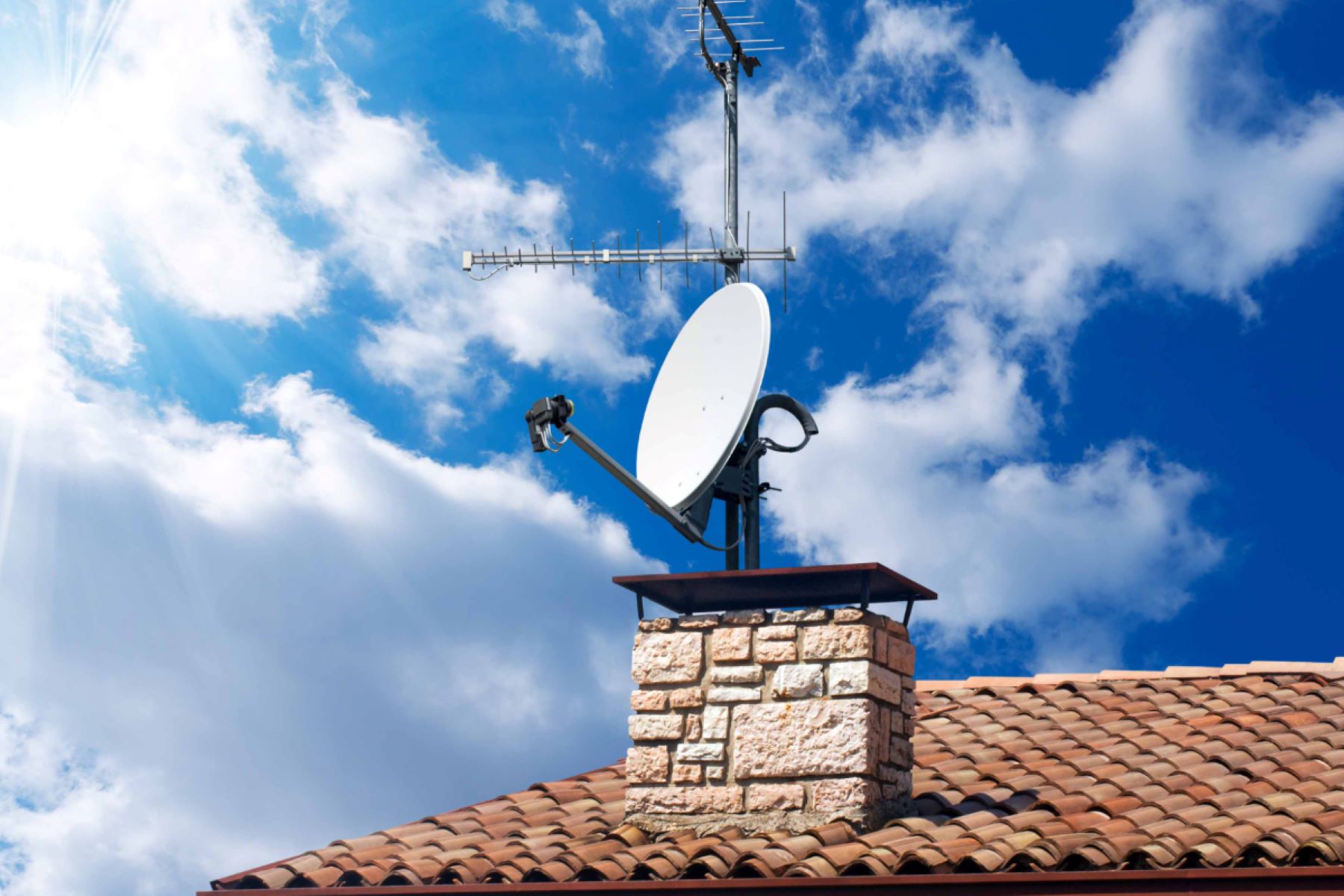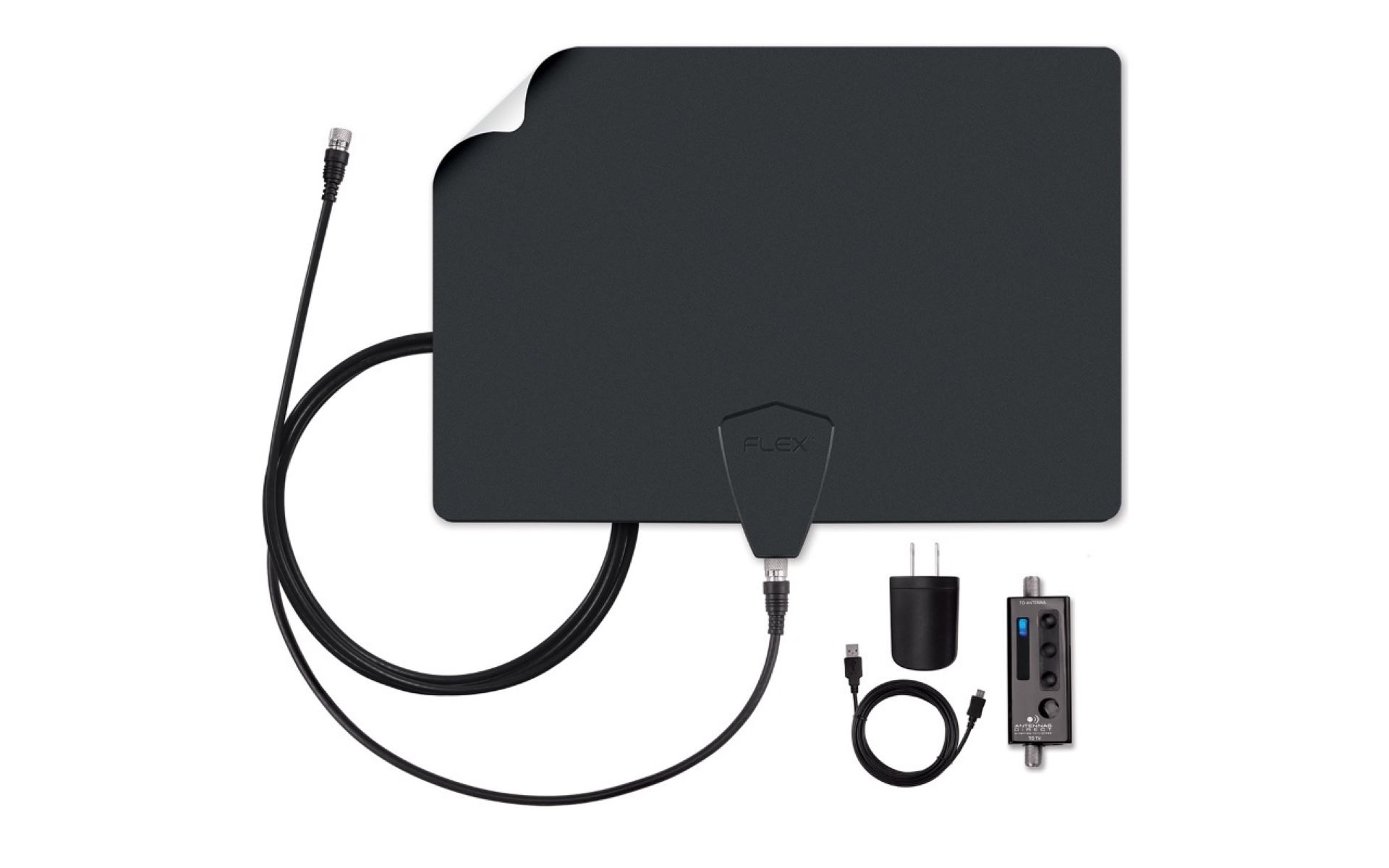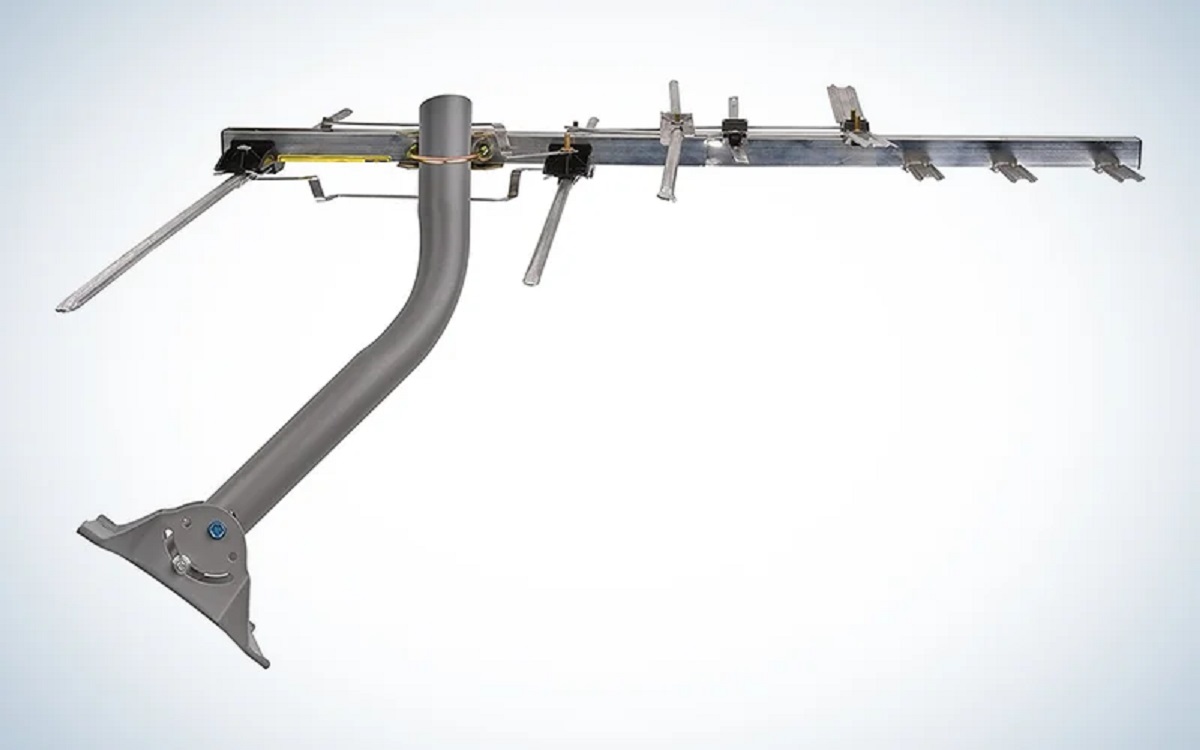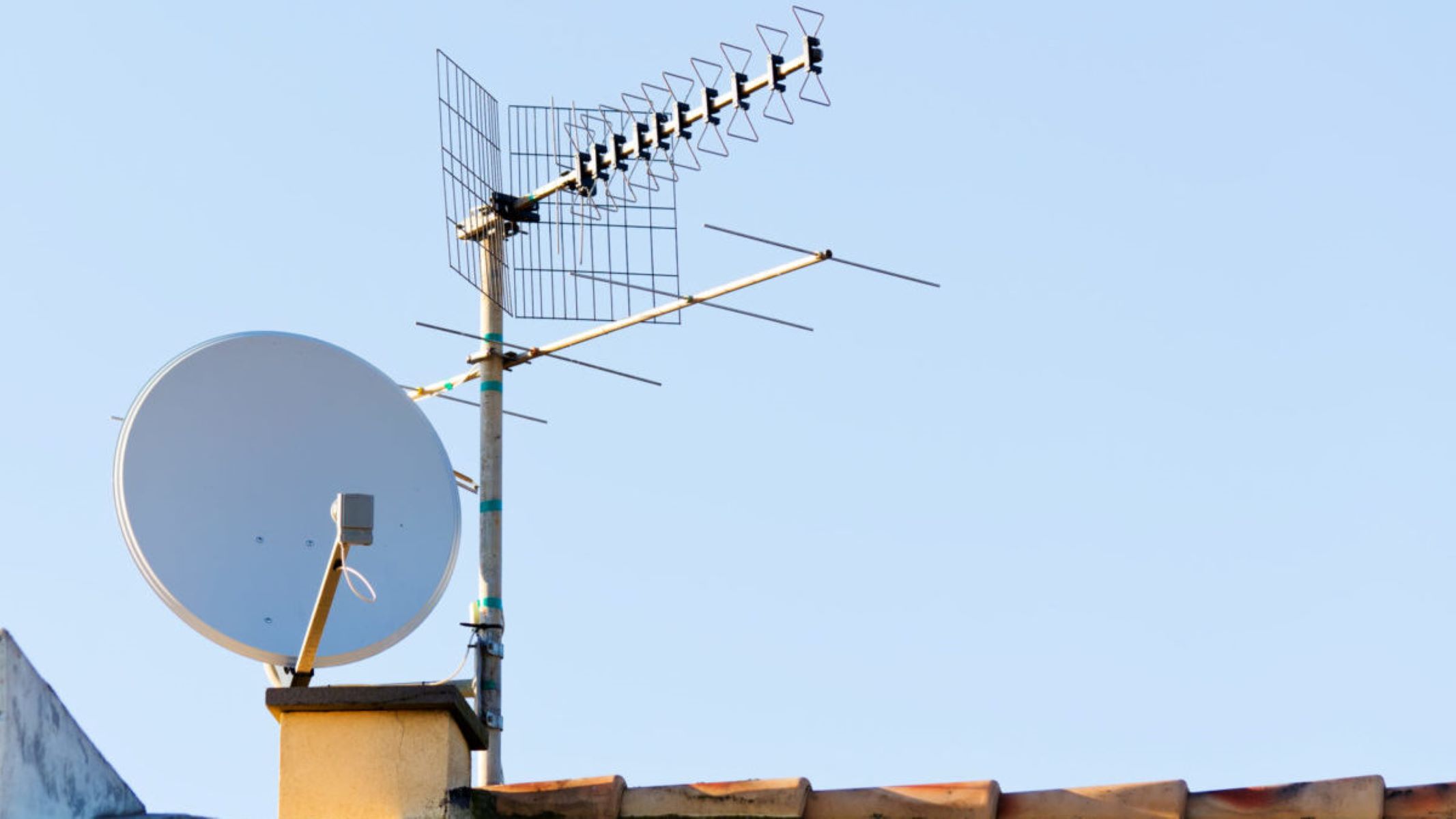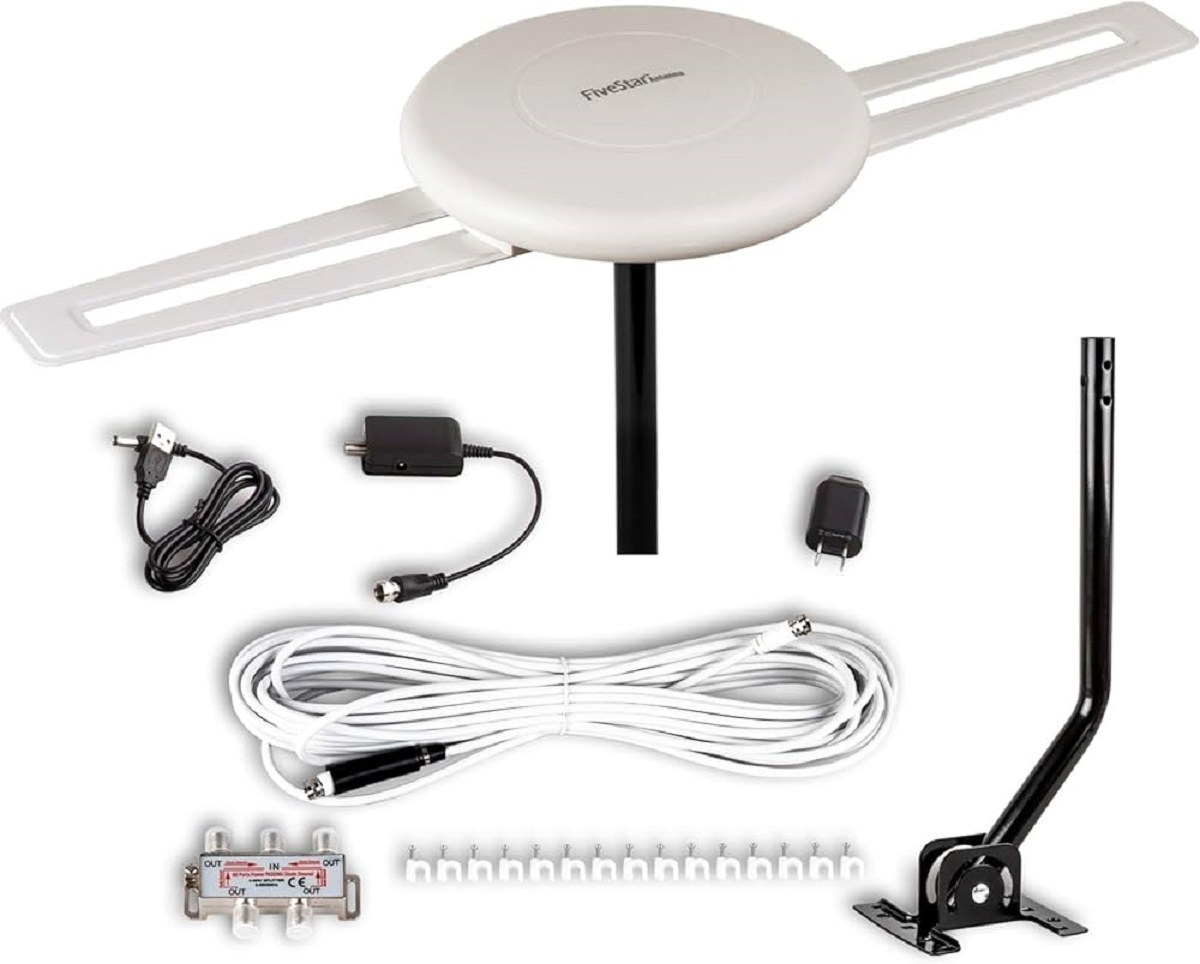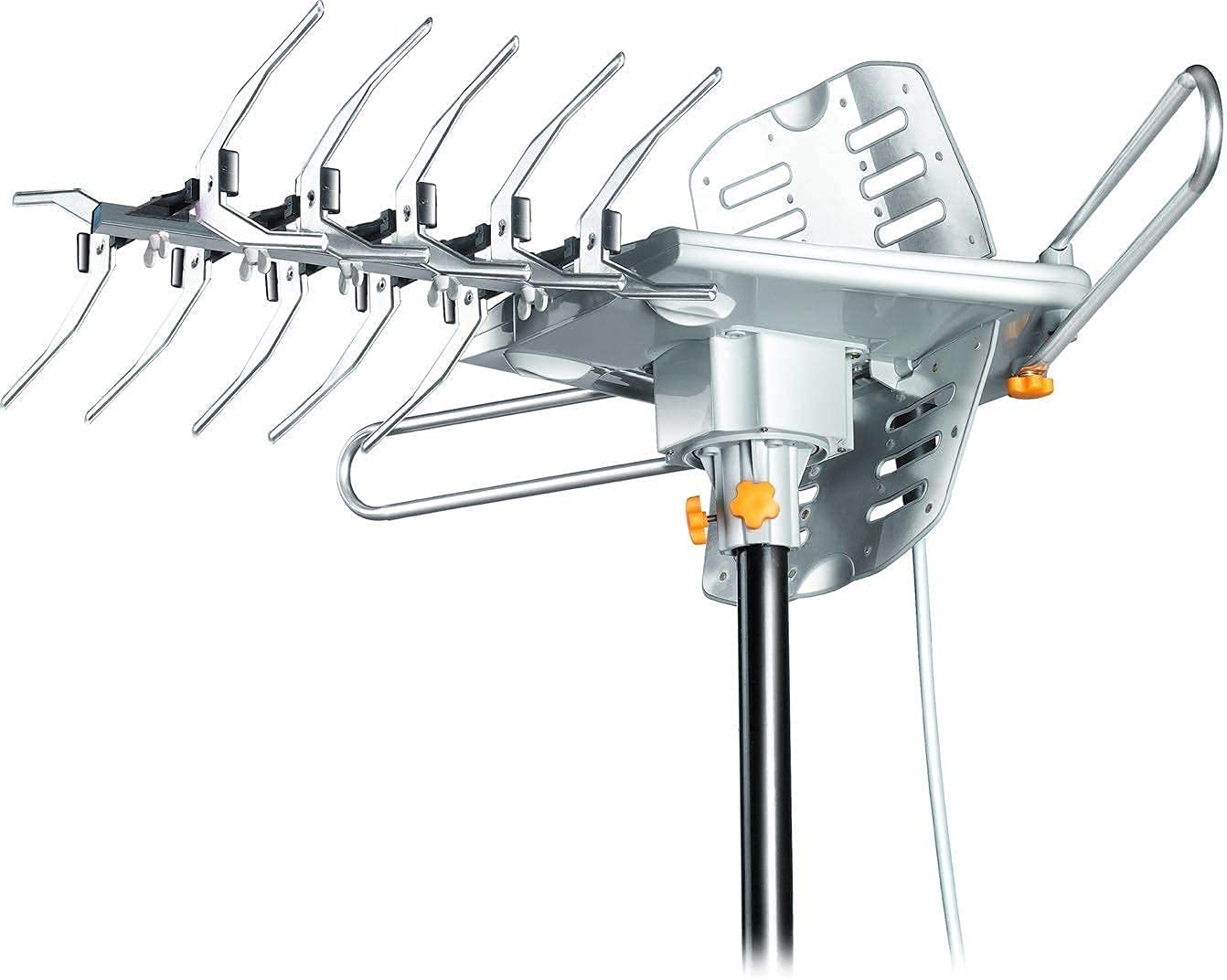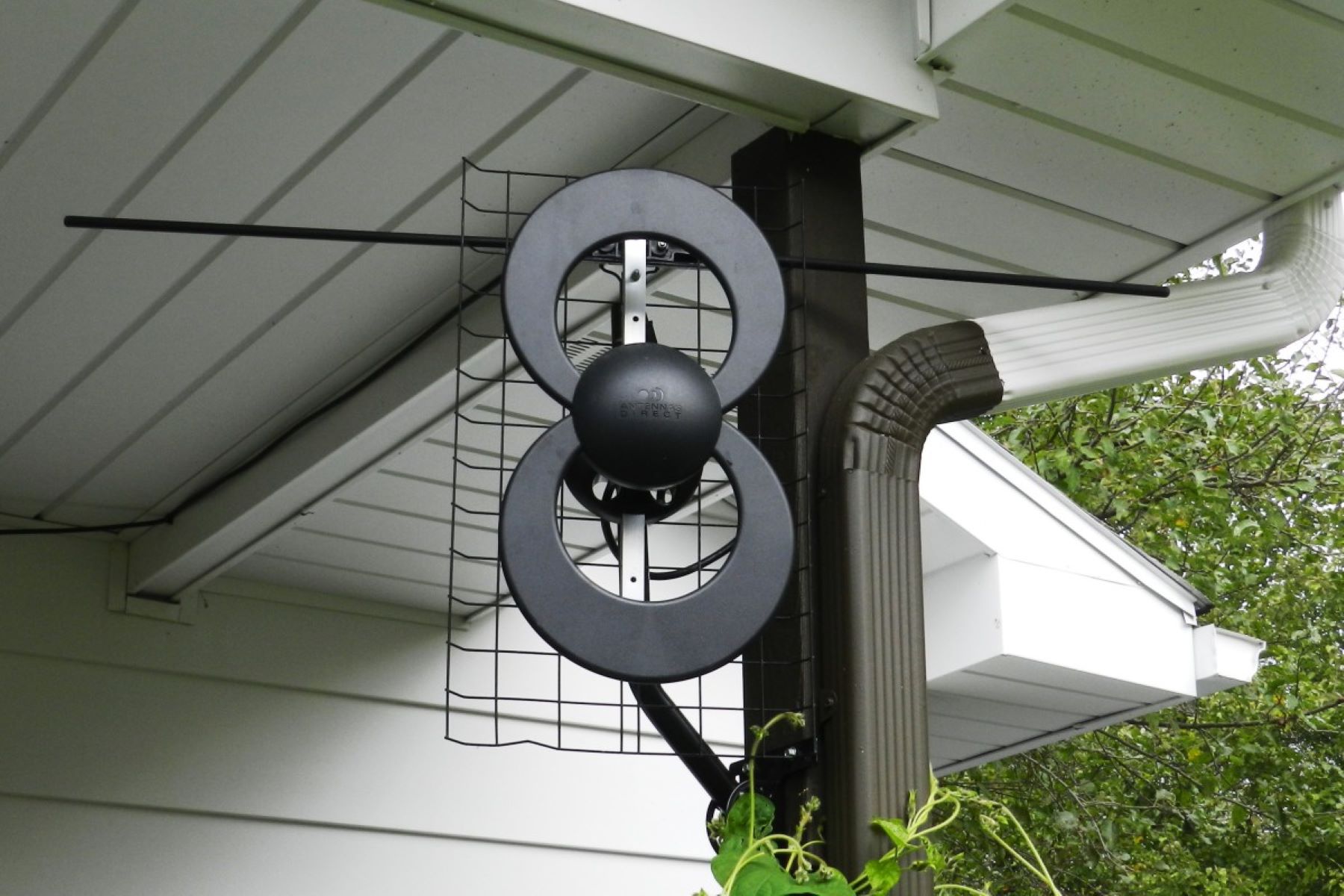Introduction
Welcome to our guide on how to pick the right TV antenna. With the rise of streaming services and cable alternatives, many people are turning to over-the-air TV signals for their entertainment needs. TV antennas are a great way to access a variety of free channels, including local news, sports, and popular network shows, without the need for a monthly subscription.
However, with so many different types of TV antennas on the market, it can be overwhelming to choose the right one for your needs. That’s where we come in! In this guide, we will walk you through the essential factors to consider when selecting a TV antenna and provide you with tips to ensure you get the best reception possible.
Whether you’re living in a suburban area, a rural countryside, or an urban city, the right TV antenna can make a significant difference in the quality and number of channels you receive. By understanding the different factors that affect antenna performance and the various types of antennas available, you’ll be able to choose one that suits your location and TV viewing preferences.
Before we dive into the specifics, it’s important to note that while TV antennas provide access to free over-the-air broadcasts, they do not have the same channel selection or features as cable or satellite TV. However, they are a cost-effective solution for those seeking a reliable way to watch popular broadcast networks.
Whether you’re a cord-cutter looking to save on your monthly entertainment expenses or simply enjoy the convenience of accessing local channels without a cable subscription, this guide will provide you with the knowledge you need to pick the right TV antenna for your home. Let’s get started!
Understanding TV Antennas
To choose the right TV antenna, it’s important to understand how they work and the factors that affect their performance. Essentially, a TV antenna is designed to capture radio frequency signals broadcasted by local television stations and convert them into audio and visual content that can be viewed on your TV.
The performance of a TV antenna depends on several factors, including its design, gain, and frequency range. The design of the antenna determines its ability to capture signals from different directions. Some antennas are designed to be multidirectional, which means they can capture signals from multiple directions without the need for constant readjustment. Other antennas are directional, meaning they need to be pointed toward the broadcasting towers for optimal signal reception.
The gain of an antenna refers to its ability to amplify weak signals. Generally, higher gain antennas can pick up signals from a greater distance, making them suitable for areas with weak reception. However, it’s important to note that stronger signals can cause interference, resulting in picture distortion. Finding the right balance between gain and signal quality is crucial for optimal viewing experience.
Additionally, the frequency range of a TV antenna determines the types of channels it can receive. Most antennas are designed to receive UHF (Ultra High Frequency) and VHF (Very High Frequency) signals. VHF signals are associated with channels 2 to 13, which include major broadcast networks, whereas UHF signals cover channels 14 to 51, which typically include local and independent stations. Make sure to choose an antenna that supports the frequency range of the channels available in your area.
Another important concept to understand is the difference between analog and digital signals. In the past, TV signals were transmitted in analog format, but now they are primarily broadcasted digitally. Since the transition to digital broadcasting, TV antennas have also evolved to be compatible with digital signals. It’s essential to choose a TV antenna that supports digital signals to ensure compatibility with modern TV sets.
By familiarizing yourself with these key aspects of TV antennas, you will be better equipped to make an informed decision when choosing the right antenna for your home. In the next section, we will explore the factors you should consider before making your selection.
Factors to Consider
When selecting a TV antenna, there are several factors to consider to ensure an optimal viewing experience:
- Location: The location of your home plays a significant role in determining the type of antenna you need. Living in a suburban area with broadcasting towers nearby may require a different antenna than living in a rural area with distant towers. Consider researching the distance and direction of the broadcasting towers in your area to determine the appropriate range and directionality for your antenna.
- Signal Strength: The signal strength in your area will affect the quality of reception. Factors such as tall buildings, obstructions, and even weather conditions can impact signal strength. Use online tools or smartphone apps to check the signal strength at your location and choose an antenna with the appropriate gain and range to compensate for any potential signal challenges.
- Antenna Type: There are different types of TV antennas to choose from, including indoor and outdoor models. Indoor antennas are typically smaller, easy to install, and suitable for areas with strong signal reception. Outdoor antennas, on the other hand, offer higher gain and are more suitable for capturing signals from distant towers or areas with weaker signal strength.
- Channels: Take into account the specific channels you want to receive. Research which channels are available in your area and ensure that your chosen antenna can capture those frequencies. Keep in mind that some channels may be UHF while others may be VHF, so selecting an antenna with wide frequency coverage will allow you to access a broader range of channels.
- Installation: Consider the ease of installation when choosing an antenna. Indoor antennas typically require minimal installation and can be easily placed near a window or on a wall. Outdoor antennas require more extensive installation, including mounting on a roof or pole. If you’re not comfortable with DIY installations, it’s worth consulting a professional installer.
By evaluating these factors and considering your specific requirements, you can make an informed decision when choosing the right TV antenna that will deliver clear and reliable reception. In the next section, we will explore the different types of TV antennas available in the market.
Types of TV Antennas
When it comes to TV antennas, there are various types to choose from, each with its own advantages and limitations. Understanding the different types can help you determine which one is best suited for your needs. Here are the most common types of TV antennas:
- Indoor Antennas: As the name suggests, indoor antennas are designed to be placed indoors, typically near a window. They are compact and easy to install, making them a popular choice for those living in urban areas with strong signal reception. While indoor antennas may not have the same range and gain as outdoor antennas, they can still provide satisfactory reception for nearby broadcasting towers.
- Outdoor Antennas: Outdoor antennas are larger and designed to be mounted outside the home, usually on rooftops or poles. They offer greater range and gain compared to indoor antennas, making them suitable for areas with weak signal reception or when the broadcasting towers are farther away. Outdoor antennas are more complex to install but can provide better reception and access to a wider range of channels.
- Directional Antennas: Directional antennas, also known as Yagi antennas, are designed to capture signals from a specific direction. They have a beam-like reception pattern, allowing them to focus on a particular broadcasting tower. These antennas are ideal for rural areas where the broadcasting towers are in a specific direction and signal strength is weaker. Directional antennas require manual adjustment to point in the correct direction and may not be suitable for areas with multiple towers in different directions.
- Multidirectional Antennas: Multidirectional antennas, also known as omnidirectional antennas, can pick up signals from all directions without the need for constant adjustment. They have a wider reception angle and are more suitable for urban areas where broadcasting towers are scattered in different directions. Multidirectional antennas are easier to install since they don’t require precise pointing, making them a popular choice for indoor antennas.
- Amplified Antennas: Amplified antennas include built-in signal amplifiers to enhance weak signals. These antennas are beneficial in areas where the signal strength is low due to distance from broadcasting towers or obstructions. Amplified antennas can help overcome signal loss and improve overall reception quality, but it’s important to find the right balance between amplification and signal overload to prevent interference.
Consider your location, signal strength, and specific requirements when choosing the type of TV antenna that suits your needs. Each type has its own pros and cons, so it’s essential to weigh the advantages and limitations to make an informed decision.
Now that you’re familiar with the different types of TV antennas, let’s move on to the next section, where we’ll explore the differences between indoor and outdoor antennas to help you determine which one is right for you.
Indoor vs. Outdoor Antennas
When choosing a TV antenna, one of the decisions you’ll need to make is whether to go with an indoor or outdoor antenna. Each option has its own advantages and considerations, so let’s explore the differences between indoor and outdoor antennas to help you determine the right choice for your situation.
Indoor Antennas:
Indoor antennas are designed to be placed inside your home, typically near a window. Here are some key points to consider:
- Ease of Installation: Indoor antennas are generally easy to install. They come in various sizes and styles, from compact flat-panel antennas to more traditional rabbit ear antennas. Installation usually involves finding the best spot near a window, connecting the antenna to your TV, and performing a channel scan.
- Signal Limitations: Indoor antennas are more susceptible to signal limitations. Since they are placed indoors, they can be affected by walls, furniture, and other obstructions that may weaken the signal. In urban areas with strong signal strength, an indoor antenna may work perfectly fine. However, in areas with weaker signal reception or when broadcasting towers are farther away, an outdoor antenna may be a better option.
- Space and Aesthetics: Indoor antennas are a good choice if you have limited space or strict homeowner association rules that restrict outdoor installations. They are compact and can be easily hidden or placed inconspicuously near a window.
- Cable Length: The length of the cable connected to an indoor antenna may be limited, which can restrict your placement options. Consider the distance between your TV and the desired location for the antenna.
Outdoor Antennas:
Outdoor antennas are designed to be mounted outside your home, typically on rooftops or poles. Here are a few things to consider:
- Signal Reception: Outdoor antennas typically provide better signal reception compared to indoor antennas. They are mounted in an unobstructed location, which allows them to capture signals more effectively, especially in areas with weak signal strength or considerable distances from broadcasting towers.
- Installation Complexity: Installing an outdoor antenna requires more effort and expertise compared to indoor antennas. It may involve attaching the antenna to a pole, mounting it on a rooftop, or running cables from outside to inside the house. If you’re not comfortable with DIY installations, it’s advisable to seek professional help.
- Range and Versatility: Outdoor antennas generally have a greater range and are more versatile in capturing signals from multiple directions. This makes them a better choice for suburban or rural areas with broadcasting towers located in different directions.
- Weather and Durability: Outdoor antennas are designed to withstand various weather conditions and are built with durable materials. They are more resistant to wear and tear over time, ensuring long-term reliability and performance.
Consider your specific situation, including the signal strength in your area, the distance from broadcasting towers, and any installation restrictions, to determine whether an indoor or outdoor antenna is the right choice for you.
Now that you have a better understanding of the differences between indoor and outdoor antennas, let’s move on to the next section, where we’ll explore how to choose the right antenna for your specific location.
Choosing the Right Antenna for Your Location
When it comes to selecting the right TV antenna for your location, there are a few key factors to consider. By taking into account these factors, you can ensure optimal signal reception and enjoy a wide range of channels. Here’s what you need to consider:
1. Signal Strength:
Start by assessing the signal strength in your area. You can use online tools or smartphone apps to check signal strength, which will help you determine the type of antenna you need. If you’re in an area with strong signal reception, an indoor antenna may suffice. However, if the signal strength is weak or there are obstructions, opting for an outdoor antenna with higher gain would be a better choice.
2. Distance to Broadcasting Towers:
The distance between your location and the broadcasting towers can impact the reception quality. If you live relatively close to the towers, an indoor antenna or a compact outdoor antenna should work well. If you’re in a rural area with broadcasting towers located at a significant distance, a larger outdoor antenna with greater range becomes necessary.
3. Tower Locations:
Identify the locations of the broadcasting towers in your area. Use online tools or consult a professional to determine the direction and distance of the towers. Depending on whether the towers are in a specific direction or scattered, you may need a directional or multidirectional antenna to capture the signals effectively.
4. Terrain and Obstructions:
Consider the terrain and any potential obstructions between your location and the broadcasting towers. Tall buildings, hills, trees, and even weather conditions can affect signal reception. In areas with significant obstructions, an outdoor antenna mounted at a higher elevation can help overcome these challenges and improve reception quality.
5. Frequency Range:
Check the frequency range of the channels available in your area. Some channels are UHF, while others are VHF, or a combination of both. Make sure the antenna you choose supports the necessary frequency range to access all the channels available. Many modern antennas are designed to capture both UHF and VHF signals, providing a wide range of channel options.
6. Amplification:
If you’re in an area with weak signal reception, consider an antenna with built-in signal amplification. Amplified antennas can boost the incoming signals, improving the reception quality. However, be cautious not to amplify the signals too much, as it can lead to signal overload and interference.
By considering these factors, you can narrow down your options and choose the TV antenna that is best suited for your area. Remember to consult product specifications and customer reviews to find an antenna that meets your specific needs.
Next, we’ll discuss the installation process of your TV antenna to ensure that you can enjoy the best reception possible.
Installing Your TV Antenna
Once you have chosen the right TV antenna for your location, it’s time to install it to ensure optimal signal reception. Proper installation is crucial for maximizing the performance of your antenna. Here’s a step-by-step guide on how to install your TV antenna:
- Locate the Best Spot: Determine the best location for your antenna. If you have an outdoor antenna, find a high point, such as the rooftop or a pole, where it can be mounted securely. For indoor antennas, place them near a window or in a spot with minimal obstructions.
- Assemble the Antenna: If your antenna requires assembly, carefully follow the manufacturer’s instructions to put it together. Make sure all the elements are securely connected.
- Mount the Antenna: For outdoor antennas, use a mount or mast to secure the antenna in the chosen location. Ensure that it is stable and properly anchored. Indoor antennas can be placed on a stand or mounted on a wall using brackets.
- Connect the Coaxial Cable: Attach the coaxial cable to the appropriate port on the antenna. For outdoor antennas, properly route the cable to the TV through a drilled hole or a cable entry point. For indoor antennas, connect the cable directly to the TV.
- Grounding (Outdoor Antennas): If you have an outdoor antenna, it is important to properly ground it to protect against potential lightning strikes. Consult local electrical codes or consider hiring a professional to ensure the antenna is grounded correctly.
- Position and Adjust the Antenna: For outdoor directional antennas, aim the antenna towards the broadcasting towers. Use a compass or smartphone app to help you find the correct direction. For indoor antennas, experiment with different placements near the window to find the best reception.
- Perform a Channel Scan: Once your antenna is properly installed, connect it to your TV and perform a channel scan. This will allow your TV to detect all the available channels in your area. Consult your TV’s manual for instructions on how to perform a channel scan.
- Test and Fine-tune: Check the signal strength and quality of the received channels on your TV. If necessary, fine-tune the position and orientation of the antenna to achieve the best reception. Remember that slight adjustments can make a significant difference in signal strength and picture quality.
It’s worth noting that every installation may have unique considerations depending on factors such as the type of antenna and your specific location. If you are unsure about any aspect of the installation process, consider consulting a professional to ensure the best results.
By following these installation steps and ensuring proper positioning and adjustment, you can optimize your TV antenna’s performance and enjoy a wide range of high-quality channels.
Next, in the event of any issues or challenges with your TV antenna, we’ll provide some troubleshooting tips in the next section.
Troubleshooting Common Antenna Issues
While TV antennas can provide reliable access to free over-the-air channels, there may be times when you encounter issues with your antenna’s performance. Here are some common antenna issues and troubleshooting tips to help you resolve them:
1. Poor Signal Quality:
If you’re experiencing pixelation, freezing, or a weak signal, there are a few steps you can take to improve signal quality:
- Check the position and orientation of your antenna. Adjusting its angle or direction could significantly enhance signal reception.
- Ensure that your antenna is pointing toward the broadcasting towers in your area.
- Check for any obstructions such as buildings, trees, or walls that may be blocking the signal. Repositioning your antenna to avoid these obstructions can improve signal quality.
- Consider using an amplified antenna to boost the incoming signals, especially if you are in an area with weak reception.
2. Channel Dropout:
If one or more channels suddenly disappear or intermittently drop out, follow these troubleshooting steps:
- Check the signal strength of the affected channels. If they have a weak signal, it may be due to changes in weather conditions or temporary obstructions. Wait for the conditions to stabilize, and the channels should return.
- Inspect your antenna and connections for any damage or loose connections. Ensure all connections are secure and free from corrosion.
- Rescan for channels on your TV to ensure you have the most up-to-date channel list.
3. Electrical Interference:
If you encounter interference that affects the clarity of your channels, follow these steps to mitigate the issue:
- Check for nearby sources of interference such as electronic devices, appliances, or LED lights. Keep your antenna away from these sources, as they can cause signal interference.
- Consider using a shielded coaxial cable to minimize interference from nearby electrical lines.
- Try repositioning your antenna to a different location, away from potential sources of interference.
4. Limited Channel Availability:
If you aren’t receiving all the channels you expected, follow these troubleshooting steps:
- Double-check the antenna’s frequency range to ensure it matches the frequencies used by the channels in your area.
- Verify that the channels you are trying to receive are actually available in your region. Sometimes certain channels may not be broadcast in your area.
- Consider upgrading to a higher-gain antenna if the broadcasting towers are farther away or if there are obstructions impeding reception.
Remember that every antenna setup is unique, and troubleshooting steps may vary depending on your specific situation. If you continue to experience issues, consult a professional installer or contact the antenna manufacturer for further assistance.
Now that we’ve covered common antenna issues and troubleshooting tips, let’s move on to the final section of our guide.
Conclusion
Choosing the right TV antenna is essential for accessing free over-the-air channels and enhancing your TV viewing experience. By understanding the different types of antennas, considering factors such as location, signal strength, and channel availability, and performing a proper installation, you can enjoy a wide range of high-quality channels without the need for a monthly subscription.
Indoor antennas are a convenient option for areas with strong signal reception and limited space, while outdoor antennas offer greater range and are suitable for areas with weaker signal strength or longer distances from broadcasting towers.
Remember to check the signal strength, identify the direction of broadcasting towers, and consider any obstructions or interference that may affect your antenna’s performance. Adjusting the position, using amplification if needed, and troubleshooting common antenna issues can help ensure consistent and reliable signal reception.
Ultimately, the choice of the right TV antenna depends on your specific location, requirements, and preferences. Conduct thorough research, refer to product specifications and customer reviews, and, if necessary, seek professional assistance to optimize your antenna setup.
We hope this guide has provided you with the information and guidance to select, install, and troubleshoot your TV antenna effectively. Enjoy your access to a wide array of free channels and happy watching!







